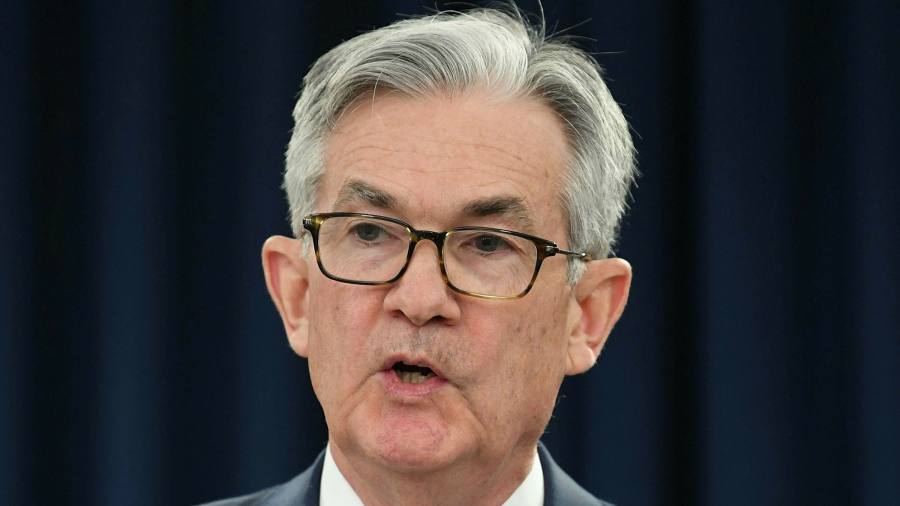[ad_1]
Jay Powell, the chair of the Federal Reserve, has told Congress that declining coronavirus cases and the vaccine rollout has offered “hope for a return to more normal conditions†later this year, pointing to a potentially brighter outlook for the US economy.Â
In prepared testimony for a hearing before the Senate banking committee on Tuesday, Powell offered one of his more optimistic assessments of economic conditions since the start of the pandemic.
However, he cautioned that there was still much uncertainty, and did not signal any change to the Fed’s ultra-easy monetary policy.
“In recent weeks, the number of new cases and hospitalisation has been falling, and ongoing vaccinations offer hope for a return to more normal conditions later this year. However, the economic recovery remains uneven and far from complete, and the path ahead is highly uncertain,†the Fed chair said in his written remarks.
“While we should not underestimate the challenges we currently face, developments point to an improved outlook for later this year,†he added.Â
The prospect for an improvement in the US Covid-19 situation — combined with new large-scale fiscal stimulus backed by congressional Democrats and US president Joe Biden — has prompted many economists to upgrade their growth forecasts for 2021.Â
Some economists have warned that a burst in economic activity could trigger an unhealthy jump in inflation, which would force the Fed to start tightening its monetary policy sooner and more abruptly than expected.
However, Fed officials have played down the threat of a spike in prices, saying it was unlikely to be sustained. They have also pointed to unused capacity in the labour market, with nearly 10m fewer Americans employed compared to a year ago.
The Fed has said it would not raise interest rates from their current level close to zero until it achieved full employment, inflation hit 2 per cent and was “on track†to exceed that target. It also said it would not begin to wind down its bond-buying programme until “substantial further progress†was made towards its objectives.Â
“The economy is a long way from our employment and inflation goals, and it is likely to take some time for substantial further progress to be achieved. We will continue to clearly communicate our assessment of progress toward our goals well in advance of any change in the pace of purchases,†Powell said.
Financial markets have already started to factor in a rosier outlook. A sell-off in US government bonds accelerated sharply last week. Yields on the benchmark 10-year note rose to 1.37 per cent on Tuesday.
Inflation-adjusted Treasury yields have also spiked, sparking concern among investors that too swift a rise could jolt risky assets and threaten Wall Street’s record stock market run.
“It really is not the absolute yield [levels] that would be concerning, it is more the speed of the movement,†said Anders Persson, chief investment officer of fixed income at Nuveen, adding that a 0.5 to 0.75 percentage point move higher in 10-year Treasury yields over a short period of time could “spook†investors.
Eric Stein, chief investment officer of fixed income at Eaton Vance, said the Fed is also likely watching Treasury gyrations closely, especially if it prompts a tightening of financial conditions that disrupts the flow of credit to businesses and consumers.
“Multiple weeks like [last] week, and the Fed may start to get concerned,†he said.
On inflation, Powell stressed that lingering low inflation was a bigger economic factor than the possibility of higher inflation.
“Following large declines in the spring, consumer prices partially rebounded over the rest of last year. However, for some of the sectors that have been most adversely affected by the pandemic, prices remain particularly soft. Overall, on a 12-month basis, inflation remains below our 2 per cent longer-run objective,†the Fed chair said.
“Well-anchored inflation expectations enhance our ability to meet both our employment and inflation goals, particularly in the current low interest rate environment in which our main policy tool is likely to be more frequently constrained by the lower bound,†he added.
[ad_2]
Source link






